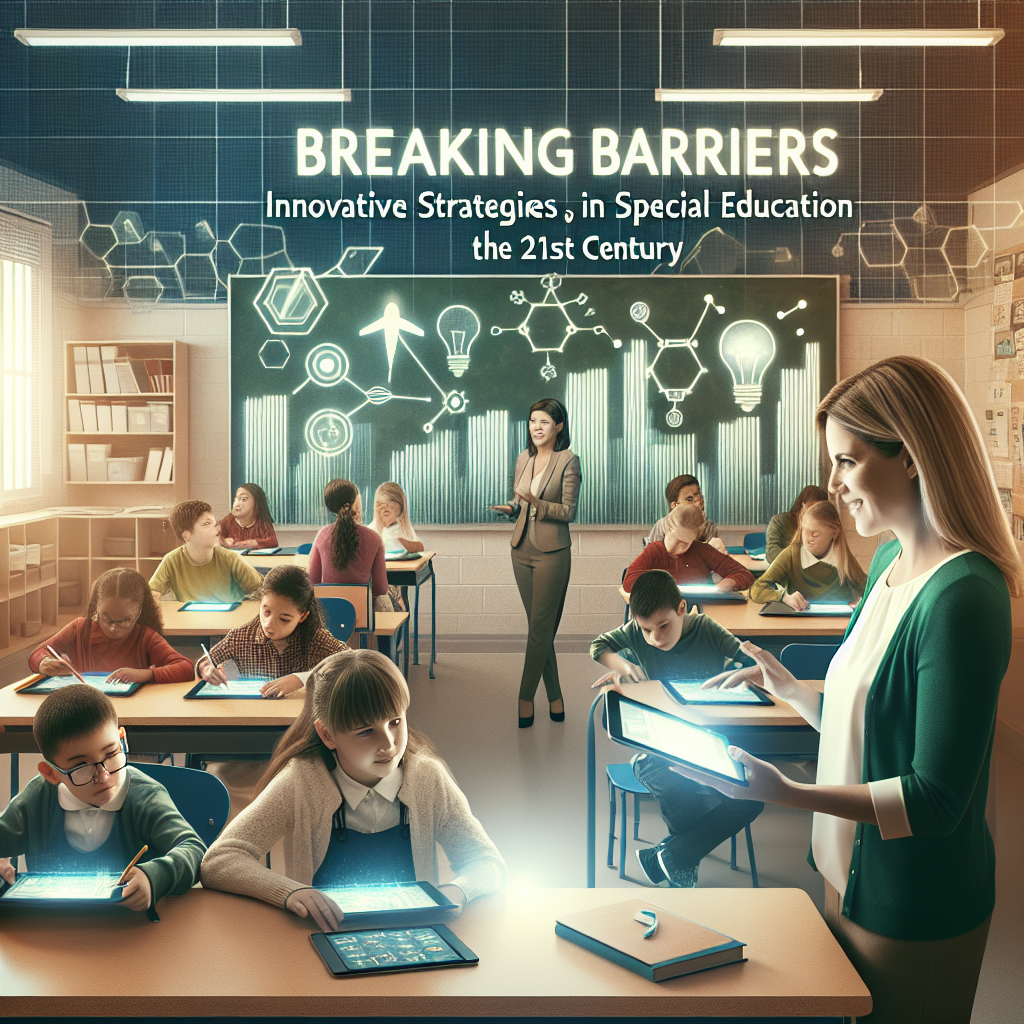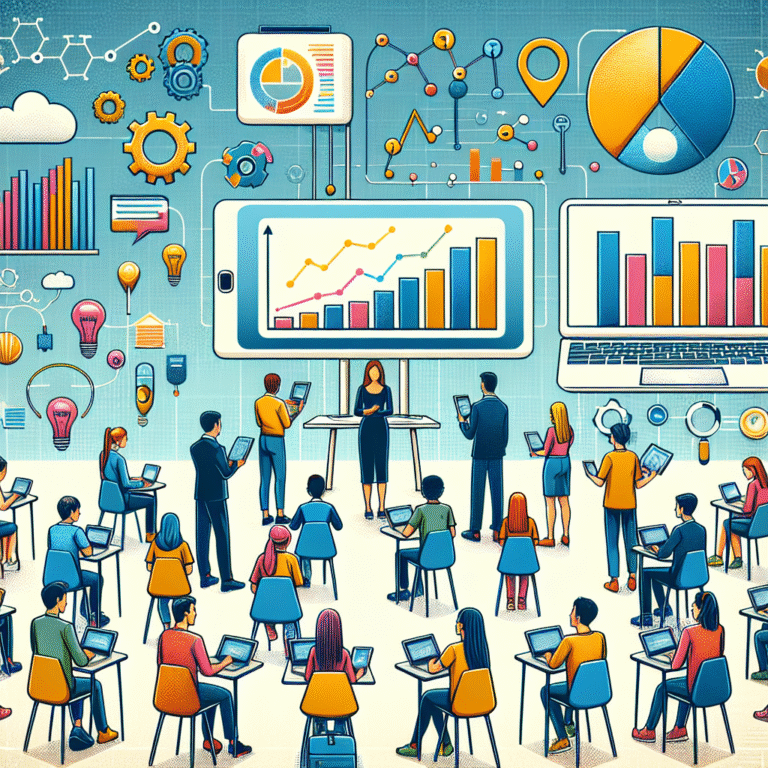
In the dynamic landscape of education today, the integration of innovative strategies in special education is more crucial than ever. Aimed at breaking barriers, these strategies ensure that every learner receives the equitable opportunities they deserve. In this article, we will explore Breaking Barriers: Innovative Strategies in Special Education for the 21st Century, examining case studies, data, and actionable insights that illuminate how these approaches are transforming the educational experience for students with disabilities.
Introduction
Every child is unique, and for those with special educational needs, this uniqueness can manifest challenges that traditional education models often overlook. As we usher in the advancements of the 21st century, embracing Breaking Barriers: Innovative Strategies in Special Education becomes essential. This isn’t just a catchphrase—it’s a movement aimed at creating an inclusive environment where all learners can thrive. The emergence of technology, personalized learning, and collaborative approaches signals a new era in special education.
Understanding Special Education in the 21st Century
The Landscape of Disabilities
Understanding the spectrum of disabilities is key to developing effective strategies. Today, disabilities encompass a wide range, from learning disabilities to autism spectrum disorders. Each category presents unique challenges and potential for growth.
- Learning Disabilities: Conditions like dyslexia or dyscalculia impact processing but do not reflect intelligence.
- Autism Spectrum Disorder (ASD): Students may excel in certain areas while facing difficulties in social interactions.
- Physical Disabilities: These require adaptive technologies for full participation.
The Importance of Specialized Strategies
Educational systems must evolve to address the diverse learning needs of students with disabilities. Here, innovative strategies play a pivotal role. Breaking Barriers involves reassessing traditional methods, integrating new technologies, and emphasizing personalized learning pathways.
Table 1: Types of Disabilities and Corresponding Innovative Strategies
| Type of Disability | Innovative Strategy |
|---|---|
| Learning Disabilities | Multi-sensory learning approaches |
| Autism Spectrum Disorder | Social stories and virtual simulations |
| Physical Disabilities | Adaptive technology and assistive devices |
Innovative Strategies in Special Education
Universal Design for Learning (UDL)
Universal Design for Learning (UDL) is an educational framework that aims to optimize teaching by providing multiple means of engagement, representation, and action and expression. UDL breaks barriers by catering to individual learning differences.
Case Study: UDL in Action
At Franklin High School, UDL principles were implemented in the science curriculum. Assignments were designed to allow for varied methods of presentations—students could choose to create videos, presentations, or posters. This led to increased engagement and higher test scores.
Relevance: This case exemplifies how UDL can facilitate a tailored educational approach, thus embodying Breaking Barriers: Innovative Strategies in Special Education for the 21st Century.
Technology Integration
The digital age offers unprecedented avenues for enhancing educational experiences. Assistive technologies—such as speech-to-text programs, text-to-speech applications, and interactive software—help bridge the gap for learners with disabilities.
Chart 1: Impact of Technology in Special Education
| Technology | Impact on Learning |
|---|---|
| Speech-to-Text Software | Increases writing fluency |
| Interactive Apps | Enhances engagement and understanding |
| Virtual Reality (VR) | Provides immersive learning experiences |
Collaborative Teaching Models
Collaborative teaching, where general and special education teachers work side by side, creates a more inclusive environment. These co-teaching models allow for differentiated instruction tailored to diverse student needs.
Case Study: Collaborative Teaching at Maplewood Elementary
At Maplewood Elementary, a co-teaching model was implemented, pairing a general education teacher with a special education teacher. This team approach resulted in improved academic performance across the board, particularly among students with learning disabilities.
Relevance: The collaboration fostered inclusivity, a key element in Breaking Barriers: Innovative Strategies in Special Education for the 21st Century.
Personal Learning Plans (PLPs)
Individualized and personalized learning plans are integral for students with special needs. PLPs focus on setting realistic, measurable goals tailored to each student’s abilities, paving a clear path for success.
Chart 2: Elements of an Effective Personal Learning Plan
| Element | Description |
|---|---|
| Strengths | Identifying what the student excels in |
| Challenges | Areas where support is needed |
| Goals | Specific, measurable objectives |
Challenges and Solutions in Implementation
Overcoming Resistance to Change
Innovative strategies often face resistance from educators accustomed to traditional methods. Professional development and training focused on the benefits of inclusive practices are essential in easing this transition.
Funding and Resources
Limited funding is a barrier to acquiring new technologies and training. Advocacy for increased funding for special education programs can help maintain and expand these innovative strategies.
Conclusion
As we move further into the 21st century, the importance of Breaking Barriers: Innovative Strategies in Special Education cannot be overstated. By embracing frameworks like UDL, harnessing technology, fostering collaboration, and developing personalized learning plans, educators can create more equitable learning environments.
Let us commit to dismantling barriers, creating pathways for success, and ensuring that every student, regardless of their challenges, is afforded the opportunity to thrive. The journey may be complex, but the rewards are immeasurable.
FAQs
1. What is the Universal Design for Learning (UDL)?
UDL is an educational approach that optimizes teaching by providing various means of engagement, representation, and action and expression to meet diverse learners’ needs.
2. How can technology enhance special education?
Technology can provide adaptive solutions that facilitate personalized learning experiences, improve engagement, and help bridge instructional gaps for students with disabilities.
3. What role do collaborative teaching models play in special education?
Collaborative teaching fosters inclusivity by allowing general and special education teachers to work together, providing differentiated instruction tailored to the needs of all students.
4. What are Personal Learning Plans (PLPs)?
PLPs are individualized plans that outline realistic, measurable goals tailored to each student’s unique strengths and needs, guiding their educational journey.
5. How can educators overcome resistance to innovative strategies in special education?
Professional development, ongoing training, and showcasing the benefits of inclusive practices can help ease the transition to innovative strategies in education.
By embracing innovative strategies in special education, we can break barriers and foster an inclusive, thriving educational landscape for all students.














